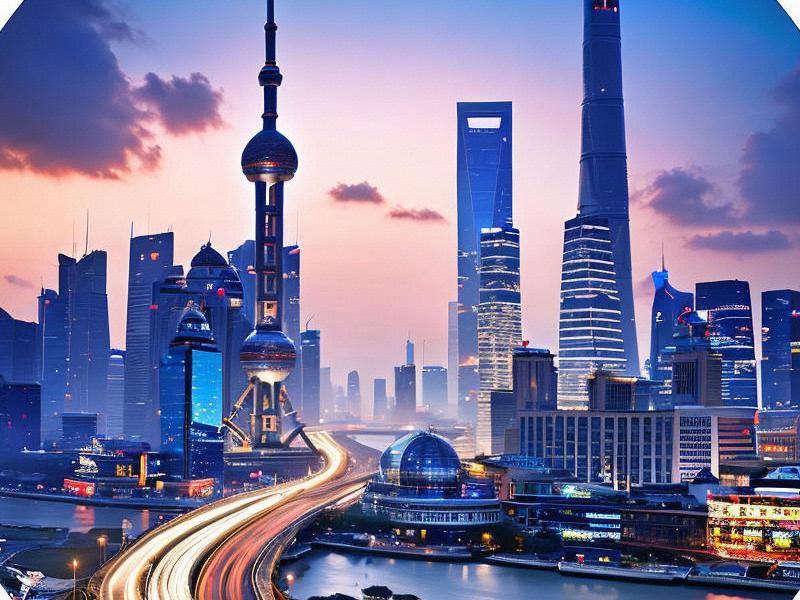Shanghai's Renaissance: A Journey Through the Modern Metropolis
⏱ 2025-04-30 12:40 🔖 上海娱乐千花坊联盟
📢0℃

Shanghai, the bustling metropolis on the banks of the Huangpu River, is a city that has witnessed a remarkable transformation over the past few decades. Once a colonial port city with a rich history, Shanghai has evolved into a global financial hub and a cultural powerhouse. Its skyline, a blend of historic architecture and futuristic skyscrapers, is a testament to its dynamic evolution.
The journey of Shanghai's renaissance began in the late 20th century when China embarked on its reform and opening-up policy. This period marked the beginning of Shanghai's economic boom, as the city embraced market-oriented reforms and attracted foreign investment. The establishment of the Pudong New Area in the 1990s was a pivotal moment in this transformation. Pudong, once a rural area, has since become a symbol of Shanghai's modernity, home to the iconic Oriental Pearl Tower, the Jin Mao Tower, and the Shanghai Tower, which is currently the tallest building in China.
The economic growth of Shanghai has been nothing short of spectacular. It is now one of the largest and most important financial centers in the world, rivaling cities like New York and London. The city's stock exchange is among the busiest in Asia, and it hosts numerous multinational corporations and international organizations. Shanghai's port is the busiest container port in the world, further cementing its status as a global trade hub.
However, Shanghai's renaissance is not just about economic growth. The city has also made significant strides in preserving and promoting its cultural heritage. The Bund, a historic waterfront area, showcases a stunning collection of colonial-era buildings that have been beautifully restored. The Yu Garden, a classical Chinese garden, offers a glimpse into the city's rich cultural past. These landmarks, along with the vibrant art scene and numerous museums, make Shanghai a city where the old and the new coexist harmoniously.
阿拉爱上海
One of the most striking aspects of Shanghai's cultural renaissance is its embrace of contemporary art and culture. The city has become a magnet for artists, designers, and cultural enthusiasts from around the world. The Shanghai Museum, renowned for its extensive collection of Chinese art, attracts millions of visitors each year. The city's numerous art galleries and cultural festivals, such as the Shanghai International Film Festival and the Shanghai Biennale, provide a platform for creative expression and cultural exchange.
Shanghai's culinary scene is another area where the city's renaissance is evident. The city is a melting pot of culinary traditions, offering everything from traditional Shanghainese cuisine to international flavors. The Bund and Nanjing Road are lined with restaurants and street food stalls, providing a taste of the city's diverse culinary heritage. Shanghai's chefs have also gained international recognition, with the city hosting prestigious culinary events and competitions.
The rapid urban development of Shanghai has not been without challenges. The city's population has grown exponentially, leading to issues such as housing shortages and traffic congestion. However, the government has implemented various measures to address these challenges, including the construction of new housing developments and the expansion of public transportation networks. The Maglev train, which connects Pudong International Airport to the city center, is a testament to Shanghai's commitment to innovation and sustainability.
爱上海同城对对碰交友论坛
Shanghai's renaissance is also reflected in its efforts to become a smart city. The city has invested heavily in digital infrastructure, leveraging technology to improve the quality of life for its residents. Smart traffic management systems, mobile payment solutions, and e-governance platforms are just a few examples of how Shanghai is embracing the digital age. These initiatives have not only enhanced the efficiency of urban services but also made the city more livable and sustainable.
The global significance of Shanghai is further underscored by its role in international diplomacy and cooperation. The city has hosted numerous high-profile international events, including the G20 Summit and the Belt and Road Forum. These events highlight Shanghai's importance as a hub for global dialogue and collaboration. The city's international schools, embassies, and consulates further contribute to its status as a global city.
Despite its rapid development, Shanghai remains committed to preserving its unique identity and cultural heritage. The city's efforts to balance modernization with tradition are evident in its urban planning and cultural policies. The preservation of historic neighborhoods, the promotion of traditional arts and crafts, and the integration of cultural elements into modern architecture are all part of Shanghai's vision for a sustainable and inclusive future.
夜上海最新论坛
The renaissance of Shanghai is not just a story of economic growth and urban development; it is also a narrative of resilience, innovation, and cultural enrichment. The city's ability to adapt to changing circumstances and embrace new opportunities has been key to its success. As Shanghai continues to evolve, it remains a symbol of China's transformation and a source of inspiration for cities around the world.
In conclusion, Shanghai's renaissance is a multifaceted phenomenon that encompasses economic growth, cultural preservation, urban development, and global significance. The city's skyline, culinary scene, art galleries, and smart city initiatives are all testaments to its dynamic evolution. As Shanghai looks to the future, it continues to build on its rich history and cultural heritage, positioning itself as a global leader in innovation and sustainability.
Shanghai's Digital Muse: How Tech-Savvy Women are Redefining Femininity in the Megacity【霓虹记忆】上海娱乐会所30年浮沉录Shanghai 5200: Quantum Symbiosis Nexus and the Photonic Civilization Matrix【霓虹与素笺】上海女性审美变迁录(1920-2025)Shanghai's Journey to Becoming a Global Innovation Hub【上海女儿】从百乐门到BFC:三代沪上名媛的衣香鬓影录Shanghai 5300: Quantum Symbiosis Nexus and the Photonic Civilization Matrix【虹桥纪事】上海西大门的百年流量密码Shanghai 5350: Quantum Leisure Singularity and the Galactic Nightlife Matrix【梧桐密码】——解码上海街区的十二层时空褶皱

